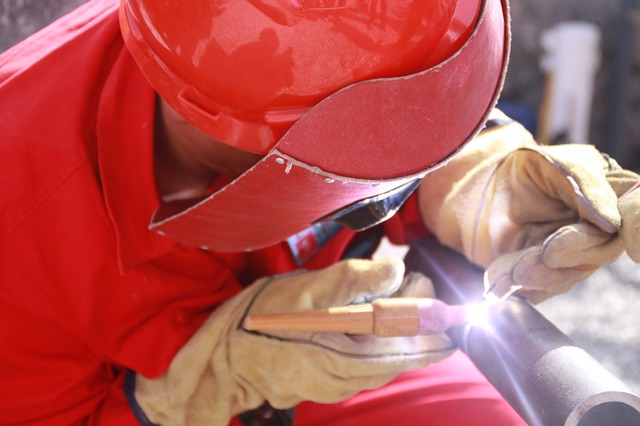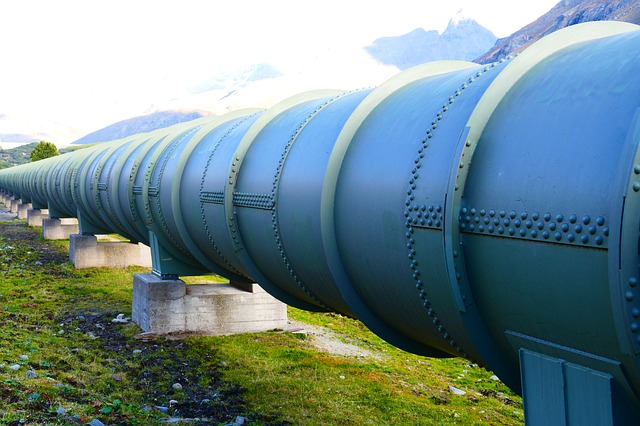
Once the integrity of a pipeline is compromised and a leak is detected, immediate corrective actions should be taken to stop the leak.
There are various pipeline repair techniques to consider when it comes to stopping leaks. However, the right technique for a leak often depends on several factors including the severity of the damage, the substance that the pipe conveys, and the kind of system that the pipe is a component of.

In this article, we will explain 5 common repair techniques for stopping pipeline leaks. We also explain how leaks can be prevented in the first place.
Repair Techniques for Stopping Pipeline Leaks
1. Hot Tapping
This is a repair technique that is often used when the engineer needs to put a hole in pressurized vessels and lines. These holes are commonly drilled in to make branch connections and tie-ins, and to install certain instruments.
One reason that the hot tapping technique is used for pressurized pipelines is that it can be done without the need to shut down the system.
Hot tapping can be used in vessels and lines that contain crude oil, water, steam, natural gas, and crude oil products.
For example, steam leak repairs for pipelines can be used for a plant’s steam generator.
2. Line Freezing
This is another repair technique that doesn’t require a system shutdown. With this method, you can isolate components of the system so that repairs can be carried out on the target areas.
With line freezing, a jacket is wrapped around the pipe, then liquid nitrogen is injected into the space between the pipe and the jacket. The injected nitrogen will then produce a freezing plug in the line. As soon as the freeze plug gets to the desired length, you can now carry out operations on the pipeline. Meanwhile, the freeze plug will only last as long as there’s a continuous supply of nitrogen.
Line freezing is suitable for welding or fittings that are related to line stops. It can also be done on different materials including cast iron, stainless steel, aluminum alloy, and copper alloy.
3. Line Plugging
Line plugging can be used when system components need to be isolated for repairs or replacement. This technique also provides the option to shut-off pressurized pipelines.
To use line plugging on a crude oil pipeline, the hot tapping technique is first used. Then a special machine for plugging the line will be used next. With the line plugging technique, a sealing element is attached to the line-plugging head and inserted into the pipe to stop flow in it without shutting down the system.
Line plugging is a safe, efficient, and cost-effective technique to ensure that processing systems are always fully operational.
4. Bolting Services
Wherever you find equipment like flanges, bolt connections are almost always used to connect the equipment to connect pipelines. Seeing that there’s a huge environmental and safety concern with fugitive emissions, eliminating leaks from a bolted connection is considered a top priority.
Common bolting services include torque tightening, bolt tensioning, and the measurement of bolt stress.
Bolting services are particularly necessary for high pressure and temperature operating systems like refineries and natural gas plants.
5. Leak Sealing
Leak sealing is an on-line and non-destructive technique that is commonly used on large pipe systems like petroleum pipelines.
“On-line” is a term that refers to the nature of a process to allow maintenance and repair procedures to be carried out on a system without the need to shut down the product flow.
Since 1922 when the first-ever leak sealant was introduced by Clay Furman, leaking sealing has proven to be an effective leak repair technique and a solution to valve leaks.
Improved sealing compounds are now being used and developed for food, chemical, and nuclear processes.
You can click here to read more about pipeline repair techniques.

How to Prevent Pipeline Leaks
Ever heard of the term “pipeline integrity”? Well, in simple terms, pipeline integrity refers to all the steps and processes taken to ensure that no hazardous substance leaks from an operational line. These processes are also put in place to ensure that if for any reason leaks happen, the impact is minimized.
The first of the three phases in pipeline integrity is prevention. This phase is further divided into 3 aspects which we will explain shortly.
Design Stage
The first stage in the leak prevention phase is the design, implementation, and construction stage. It is at this point that considerations are made about the physical properties and technical requirements of the pipeline. All the approved specifications during the design are then met and implemented in the construction of the line.
Here are a few things to note while designing and constructing the pipeline:
- There must be no geo-hazards on the line’s route.
- The line must be protected against corrosion.
- The compressor and pump sizes must be accurate.
- The equipment designed to suppress surges should be sized properly.
Pipeline engineers also take advantage of simulation tools, techniques, and technologies to ensure that the implemented design is effective.
Operational Stage
At this stage, the pipeline is already operational. Here, the line is monitored to ensure that it is working as it should. More so, if there are any critical warnings that the operators need to consider to prevent leakage, monitoring the pipeline will help them spot it so that they can take immediate and necessary measures.
Some of the aspects of a pipeline to monitor include:
- The line’s external and internal integrity.
- The operating pressure of the substance in it.
- Possible excavation activity, and
- Ground temperature
Continuous Education and Training
Without the right information, pipeline operators may not know what to consider or look out for to prevent leaks. This is why regular training and relevant education is necessary.
Since they operate these expensive assets, it is only wise to train the operators and ensure that they have the necessary certifications required to operate them. Regular training will keep the operators informed about potential threats and risks to the lines and how to prevent or escalate them.
Conclusion
As with most things, prevention, they say, is better than cure. And in this article, we showed you how pipeline leaks can be avoided. However, when it comes to pipelines, preventive measures may either be too late or inadequate. This is where pipeline leak repair services are required.
A repair service can assess leaks quickly and proffer the right solution to mitigate product losses. This will, in turn, save you money and save your business.
